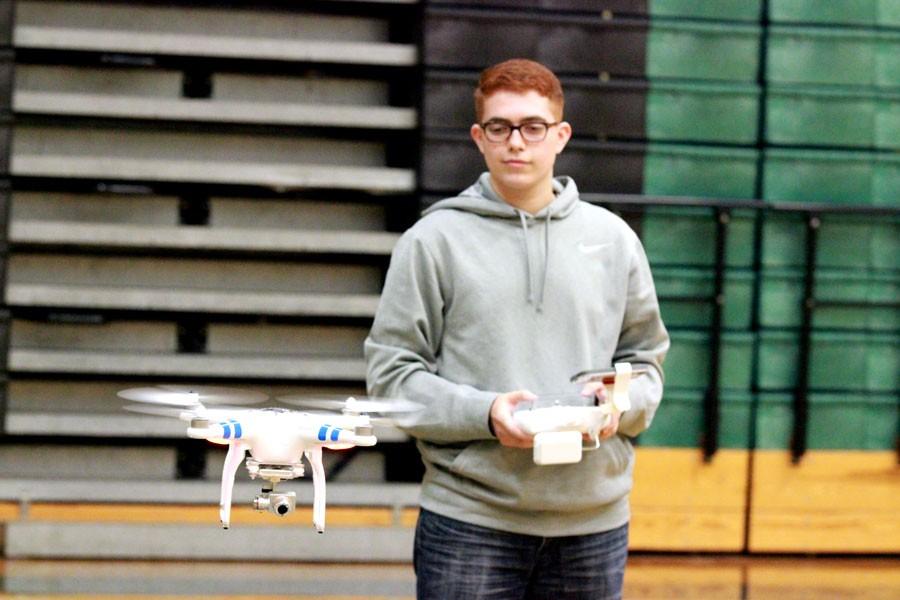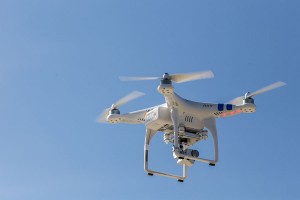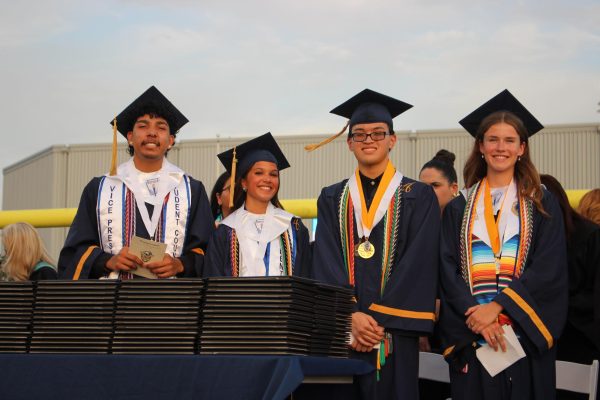JROTC student takes a sky view with drone
Machine captures photos, video from up to 200 feet in the air
Junior Zach Trevino demonstrates the drone’s flying capabilities in the gym for aerospace students.
February 21, 2015
While flying an unmanned drone 200 feet in the air, junior Zachary Trevino is able to capture high definition video of highways, houses and everything in between.
Trevino, a Major in the Akins Air Force Junior Reserve Officers’ Training Corps unit, has been learning to fly the drone since late September. The unit received the drone as part of a drawing, which incorporated schools all around the country that have Science, Technology, Engineering and Math (STEM) programs, who were interested in the technology.
A number of other programs around the country were offered the chance to receive the drone, but Akins JROTC members jumped at the opportunity and successfully won the DJI Phantom Aerial UAV Drone Quadcopter with high-definition camera.“We were just asked to send in an email, and the first 20 school’s to comply would receive a drone for free,” Trevino said.
The United States Air Force, who supports the Akins JROTC program, is allowing students to explore further into aerospace by providing a way for members to explore flight opportunities, including drones.
“It’s a way to help students know that there’s more to going into the military,” JROTC Col. Ronald Oliverio said. It helps teach basic flight concepts that can help students understand how to fly a plane, and the basics of aerospace, he said.
“I’m excited to get the chance to fly it”, said senior Nicholas Ortiz. “It’s a great utility for education and entertainment use, especially with aerospace being part of the curriculum.”
Akins STEM program is helping the JROTC program develop lessons and plans to teach the cadets ways to learn the usages of the drone.
“It’s going to be something the students will actually want to be involved with,” Oliverio said.
The drone is a quadcopter machine, capable of flying up to 500 feet in the air, while moving at 15 meters a second. However, Trevino keeps the drone under the Federal Aviation Administration’s mandated 200 feet height limit.
The drone also connects to a smartphone phone, allowing operators to see video as it flies. This helps pilots to better control it even when the drone is out of sight to the naked eye on the ground.
“It’s actually really neat,” Trevino said. “You can record everything you see and it comes out in a nice video, and it’s got a lot of features to help you fly.”
Trevino said he was surprised at how easy it was to learn how to fly it.
“It wasn’t as hard as I thought it could have been,” Trevino said. “I just took it out, and taught myself. Didn’t really look at the manual. It was easier to just do it.”
The JROTC program plans to introduce the drone in next year’s curriculum. That will give next year’s students the chance to learn the machine’s uses and take time to explore it. It also allows students time to train how to use the copter before flying it.
With the help of the drone the program hopes to be able to show students an exciting side of JROTC and get students more involved with what the military is able to do.










